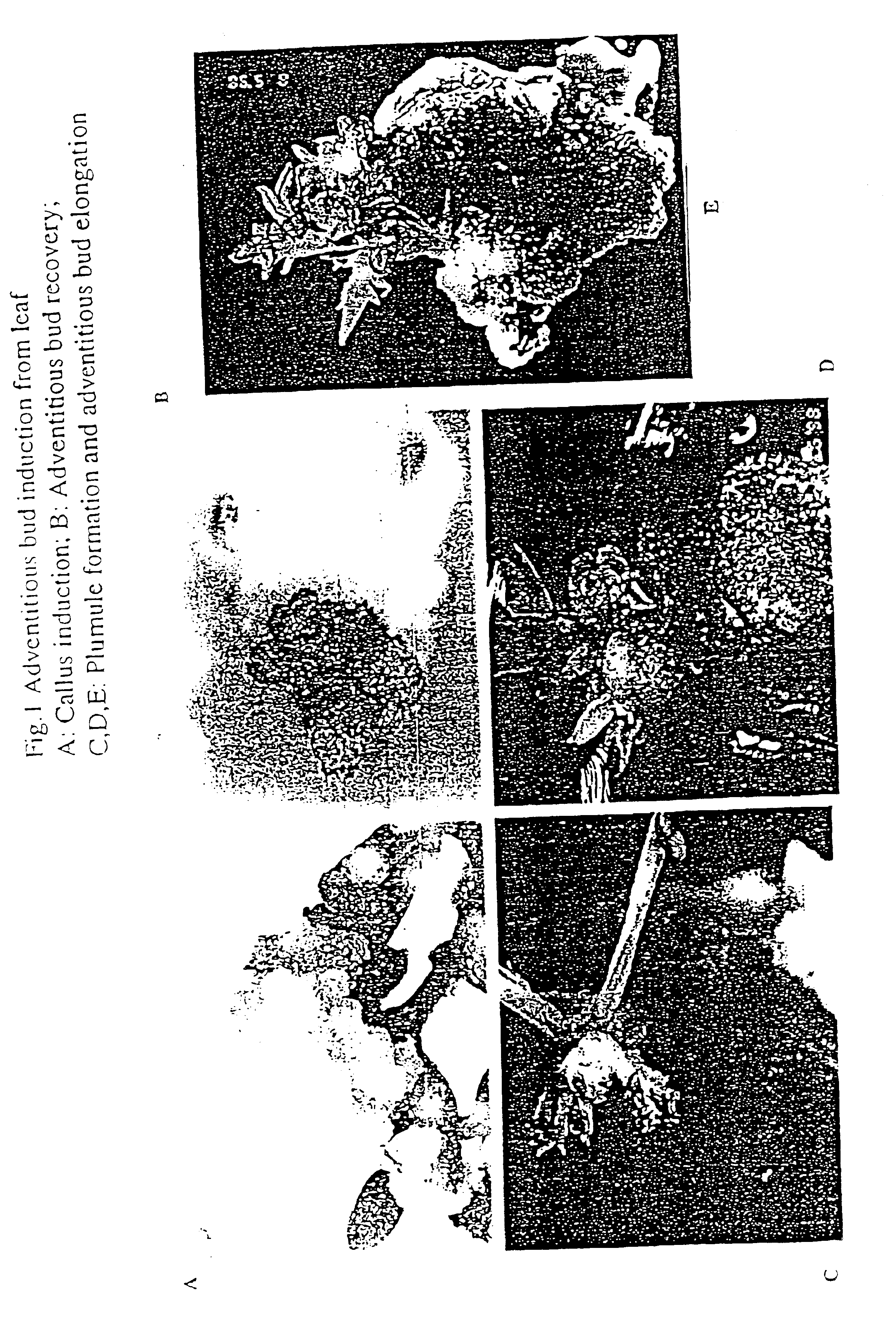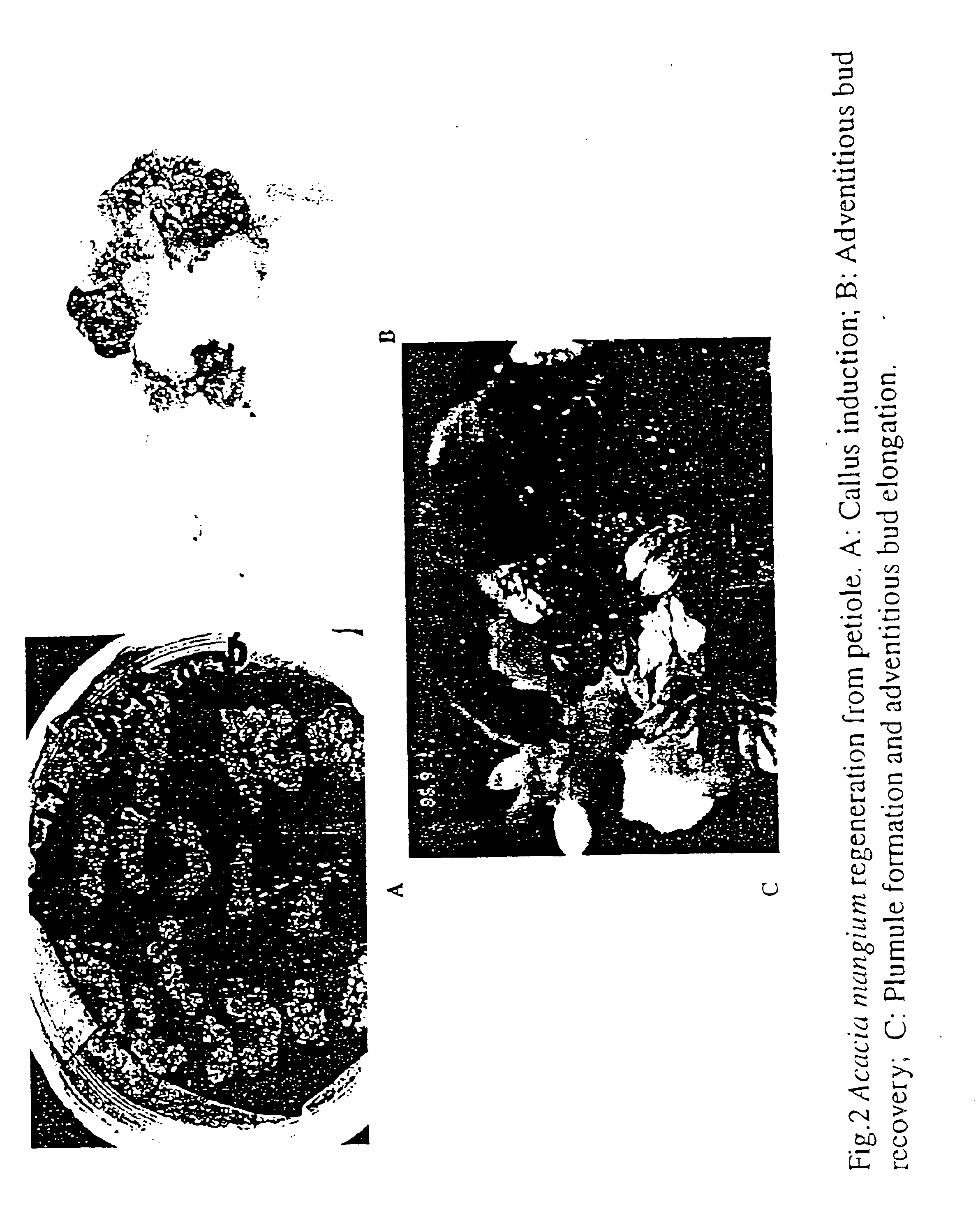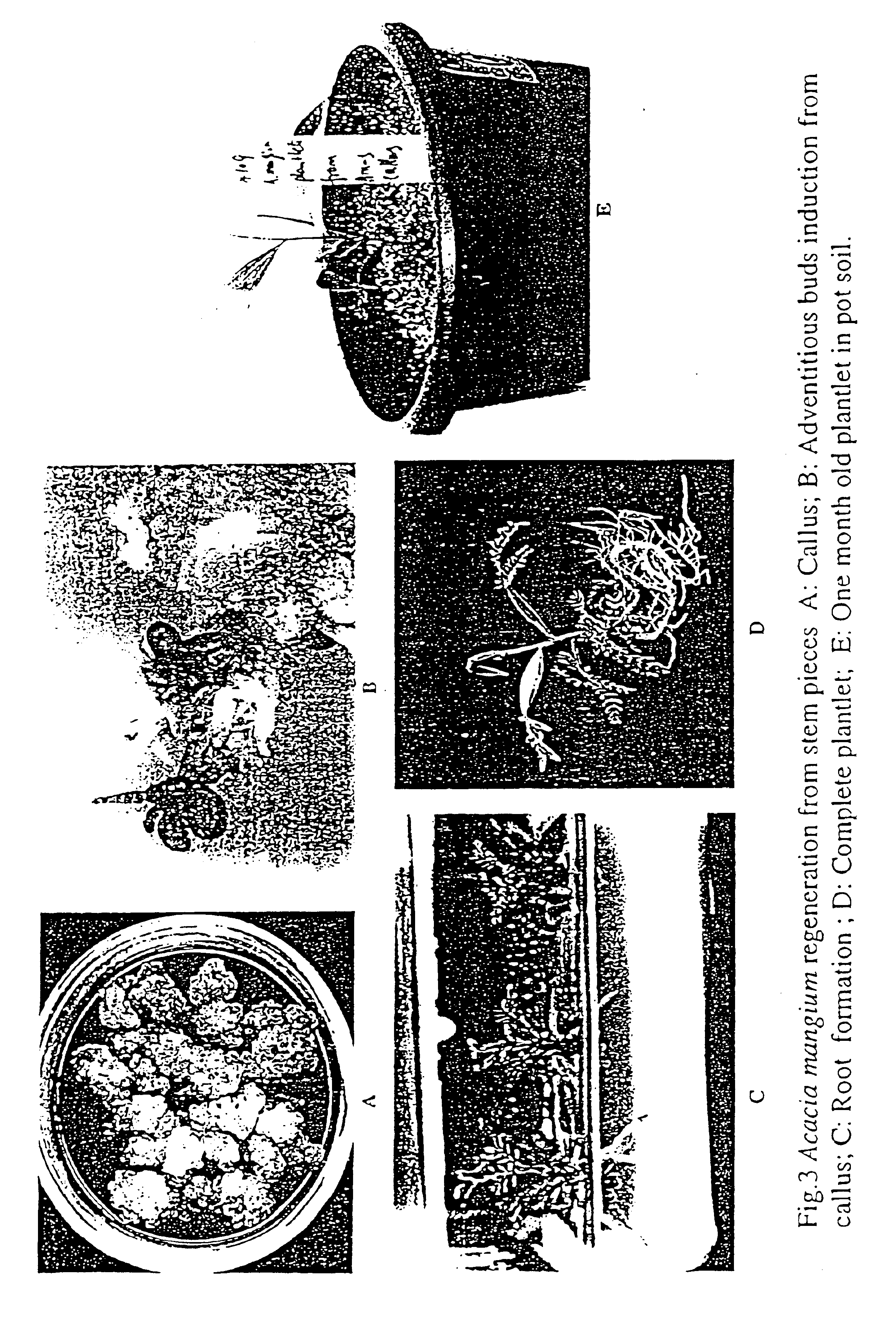Regeneration and genetic transformation of Acacia mangium
- Summary
- Abstract
- Description
- Claims
- Application Information
AI Technical Summary
Problems solved by technology
Method used
Image
Examples
example 1
Reagents and Culture MediaA. MS basic medium: MS medium (Murashige and Skoog, 1962)Concen-SigmatrationCat.NameMolecular formula(mg / L)No.MacronutrientsAmmonium NitrateNH4NO31,650A-3795Potassium NitrateKNO31,900P-8291Calcium Chloride dihydrateCaCl2.2H2O440C-2536Magnesium SulfateMgSO4.7H2O370M-7774HeptahydratePotassium phosphateKH2PO4170P-8416monobasic, anhydrousFerrous Sulfate HeptahydrateFeSO4.7H2O27.8F-8263Ethylenediamine-tetraaceticC10H14N2O8Na2.37.3E-6635acid (EDTA)2H2O (Na2EDTA)MicronutrientsPotassium IodideKI0.83P-8166Boric AcidH3BO36.2B-9645Manganese SulfateMnSO4.H2O16.9M-7899monohydrateZinc SulfateZnSO4.7H2O8.6Z-1001Molybdic Acid (SodiumNa2MoO4.2H2O0.25M-1651salt:dihydrate)Cupric SulfateCuSO4.5H2O0.025C-3036(Pentahydrate)Cobalt ChlorideCoCl2.6H2O0.025C-2911(hexahydrate)Organic Reagentsmyo-InositolC6H12O6100I-3011Nicotinic acidC6H5NO20.5N-0765GlycineC2H5NO22.0G-6143Thiamine (Vitamin B1)C12H17ClN4OS.HCl0.1T-3902Pyridoxine (Vitamin B6)C8H11NO3.HCl0.5P-9755HydrochlorideB. Other Or...
example 2
Assay for GUS Activity
Stain the tissue overnight at 37° C. in GUS staining solution. Gus staining solution is described by Jefferson (1987). It is X-gluc-1 mM, sodium phosphate (pH 7.0)-100 mM, EDTA-10 mM, and Triton X-100-0.1% GUS staining showed a positive blue reaction in adventitious buds and stem and leaf (FIGS. 8, 9, and 10).
example 3
Southern Analysis
A method for performing Southern blots is described in Sambrook et al. (1989). The method is:
A. DNA extraction
2-5 g fresh sample was frozen in liquid N2. This was ground with a mortar and pestle in liquid nitrogen to a fine powder. The powder was transferred to a centrifuge tube (50 mL). 15 mL of Extraction Buffer was added, 2 mL 10% SDS was added and mixed thoroughly. This was incubated at 65° C. for 15 minutes. 5 mL S M KAc was added and shaken vigorously. The mixture was incubated in ice for 20 minutes and then spun at 25,000×g for 20 minutes. The supernatant was filtered through Microcloth into a new tube. The DNA was precipitated with ½ volume of isopropanol, mixed and incubated at −20° C. for 30 minutes.
The DNA was pelleted at 25,000×g for 30 minutes, the supernatant was poured off, and the tube was inverted and air dried for 30 minutes. The pellet was dissolved with 0.7 mL of 1×TE (pH 8.0) and transferred to an Eppendorf tube. This was spun 10 minutes. The su...
PUM
| Property | Measurement | Unit |
|---|---|---|
| Temperature | aaaaa | aaaaa |
| Time | aaaaa | aaaaa |
| Time | aaaaa | aaaaa |
Abstract
Description
Claims
Application Information
 Login to View More
Login to View More - R&D
- Intellectual Property
- Life Sciences
- Materials
- Tech Scout
- Unparalleled Data Quality
- Higher Quality Content
- 60% Fewer Hallucinations
Browse by: Latest US Patents, China's latest patents, Technical Efficacy Thesaurus, Application Domain, Technology Topic, Popular Technical Reports.
© 2025 PatSnap. All rights reserved.Legal|Privacy policy|Modern Slavery Act Transparency Statement|Sitemap|About US| Contact US: help@patsnap.com



